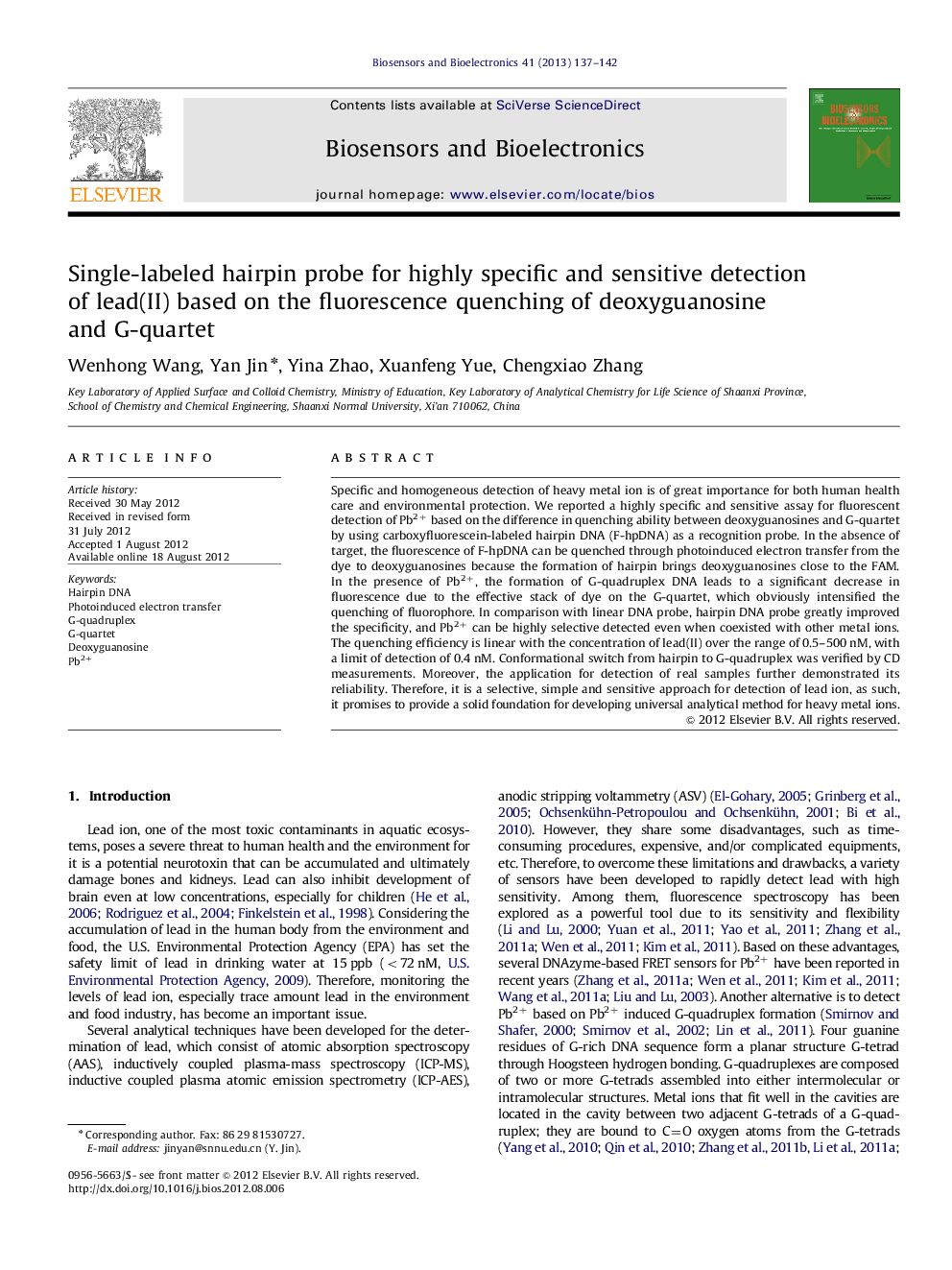| Article ID | Journal | Published Year | Pages | File Type |
|---|---|---|---|---|
| 7234326 | Biosensors and Bioelectronics | 2013 | 6 Pages |
Abstract
Specific and homogeneous detection of heavy metal ion is of great importance for both human health care and environmental protection. We reported a highly specific and sensitive assay for fluorescent detection of Pb2+ based on the difference in quenching ability between deoxyguanosines and G-quartet by using carboxyfluorescein-labeled hairpin DNA (F-hpDNA) as a recognition probe. In the absence of target, the fluorescence of F-hpDNA can be quenched through photoinduced electron transfer from the dye to deoxyguanosines because the formation of hairpin brings deoxyguanosines close to the FAM. In the presence of Pb2+, the formation of G-quadruplex DNA leads to a significant decrease in fluorescence due to the effective stack of dye on the G-quartet, which obviously intensified the quenching of fluorophore. In comparison with linear DNA probe, hairpin DNA probe greatly improved the specificity, and Pb2+ can be highly selective detected even when coexisted with other metal ions. The quenching efficiency is linear with the concentration of lead(II) over the range of 0.5-500Â nM, with a limit of detection of 0.4Â nM. Conformational switch from hairpin to G-quadruplex was verified by CD measurements. Moreover, the application for detection of real samples further demonstrated its reliability. Therefore, it is a selective, simple and sensitive approach for detection of lead ion, as such, it promises to provide a solid foundation for developing universal analytical method for heavy metal ions.
Related Topics
Physical Sciences and Engineering
Chemistry
Analytical Chemistry
Authors
Wenhong Wang, Yan Jin, Yina Zhao, Xuanfeng Yue, Chengxiao Zhang,
